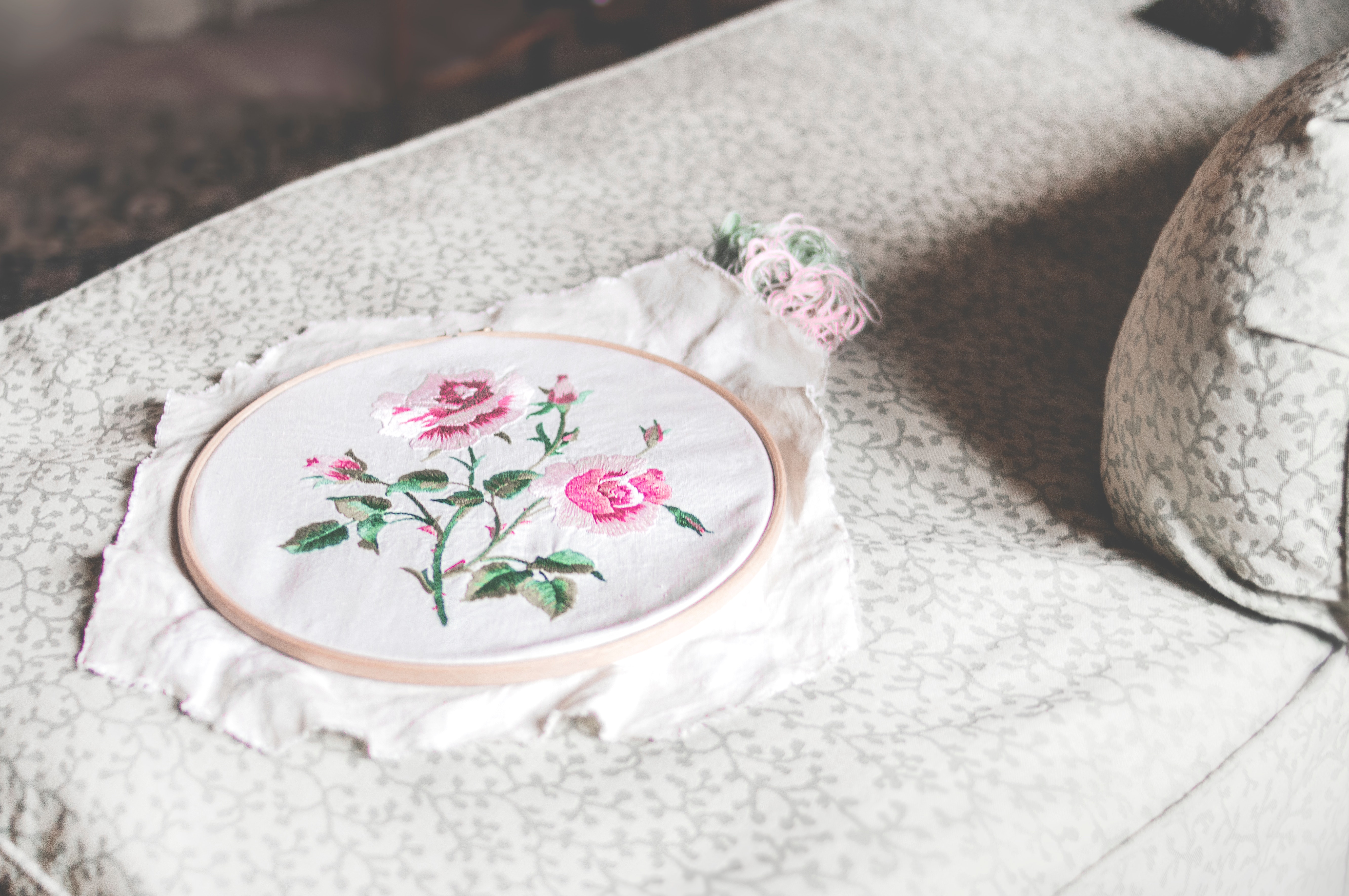We use cookies to improve your experience on our website and to personalise the content shown to you. By clicking 'Accept' you are accepting our cookie policy. You can personalise your options within your browser settings.

Embroidery has long been a popular way to personalise clothing and other fabrics, and its vibrant colours, textures, and patterns have made it an enduring craft. From fine needlework on upholstery fabric to simple monograms on jackets or bags, the possibilities for embroidery are practically endless.
Whether you’re just starting out in this fascinating hobby or already well-versed in needlecraft techniques, this blog post will provide an overview of the history of embroidery as well as some helpful tips so that you can start creating beautiful designs yourself.
At its most basic, embroidery is the art or craft of decorating fabric with needle and thread. It is one of the oldest forms of decorative needlework and has been used for centuries as a way to embellish clothing, home decor items such as curtains and table linens, and even religious symbols.
There are many types of textile embroidery, from cross-stitch to crewel work and even the use of beads and sequins. Each type requires a unique set of stitching techniques and supplies depending on the desired effect.
Generally speaking however, there are two main methods of textile embroidery: hand and machine. The former involves stitching with a needle and thread, while a machine is used to control the design by guiding each individual stitch.
The history of embroidery goes back centuries and spans many cultures. Ancient embroidery has been discovered on clothing, textiles, and other artefacts of the ancient Egyptians and Chinese, though its exact origins remain something of a mystery. Despite this, research suggests that these early cultures used very basic techniques, including simple thread-work stitches such as running stitch and straight stitch.
By the Middle Ages, more complex techniques had developed, and mediaeval embroidery was widespread throughout Europe. It was especially popular among the wealthy who could afford to pay for intricate designs in gold or silver thread. As a result, many religious figures and members of royal courts were commonly seen wearing garments with beautiful embroidered patterns and motifs.
Over time, textile embroidery began to spread to other parts of the world, and different cultures adopted their own unique styles. For example, in India and China embroidery traditionally incorporates bright colours and intricate patterns while European designs are often simpler with a focus on geometry.
Today, advances in technology have given us access to many different types of materials, threads, and tools, allowing us to create intricately detailed designs in a fraction of the time.
Embroidery is an enjoyable and creative hobby that has recently been popular with many craftspeople and textile designers. To get started with this craft, you will need to assemble a few basic tools to start:
As mentioned already about the history of embroidery, the craft has been around for centuries and is still beloved today by many who enjoy its rich history, versatility, and stunning results. There are many basic stitches that make up the craft such as running, back, stem and split stitches - all of which create individual designs in their own right.
Other less commonly used stitches that create a variety of textures and effects include hemstitching, French knots and Silk Ribbon embroidery. Each has a unique impact on the embroidery fabric, resulting in beautiful outcomes even for those with more limited experience in hand sewing.
When working on any sewing or quilting project, it is important to consider the right embroidery fabric and thread type to use. Different projects require different types of fabrics, such as lightweight cotton or heavy wool, and knowing which fabric to use can have an immense impact on the strength and quality of your final product.
So selecting a good quality thread suited for your particular project should be a priority - this will not only enhance its appearance significantly but also keep it from unravelling quickly. Depending on the type of project you are undertaking, researching the best fabrics and threads that are available may be beneficial to ensure an excellent outcome when completing the piece.
Though embroidery is a relatively simple craft, there are many helpful tips and tricks that can help you improve the quality of your work. Here are some ideas to keep in mind:
Although creative embroidery projects may seem daunting, there are numerous ways to begin crafting right away. Whether you're a beginner or more advanced in the craft, online resources and stores offer plenty of tutorials, kits, and supplies to get started. From bookmarks and purses to wall hangings and jewellery, with the help of modern technology anyone can explore the beauty of hand-embroidery at home.
With the proper materials and knowledge, you can create beautiful pieces for yourself or for loved ones with everything from classic cross stitch patterns to freeform abstract stitched embroidery.
The history of embroidery is vast and its popularity continues to this day. There are many tools and supplies available to help you create beautiful pieces with ease from the comfort of your own home. Additionally, there are plenty of tips, tricks and projects to explore when embarking on this craft. With some practice and patience, you can easily create stunning works of art with embroidery.
At I Want Fabric, we offer a wide range of quality upholstery fabric perfect for embroidery projects. Whether you’re looking for something classic or modern, we have the perfect material to help bring your vision to life.
Browse our upholstery fabric range today to get inspired!